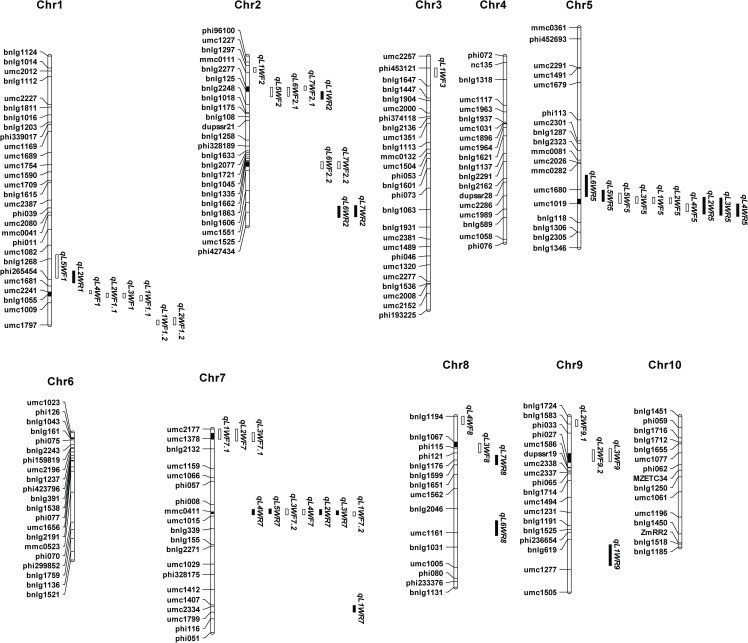Leaf width is an important component of plant architecture that affects light capture during photosynthesis and wind circulation under dense planting conditions. To improve understanding of the genetic mechanisms involved in leaf width at different positions, a comprehensive evaluation using the RIL (Recombinant Inbred Line) and IF2 (Immortalized F2) populations and a subsequent meta-analysis were performed. Forty-seven QTL associated with leaf width at different positions below the tassel were detected. The individual effects of QTL explained 3.5% to 17.0% of the observed phenotypic variation, and ten QTL explained over 10%. The initial QTL were integrated into eight mQTL (meta-QTL) through a meta-analysis. Our results suggested that leaf widths at different positions may be affected by several of the same mQTL and may also be regulated by many different mQTL. These results provide useful information for breeding high density tolerant inbred lines and hybrid cultivars, as well as for using marker-assisted selection for important mQTL.

Initial QTL and mQTL detected for the seven leaf widths. The “Chr” represents chromosome. The white bar and the bold bar represents the initial QTL detected in IF2 and RIL population respectively. The bold segments in chromosome represent the region of mQTL.


